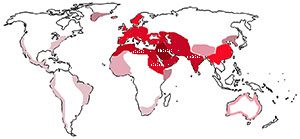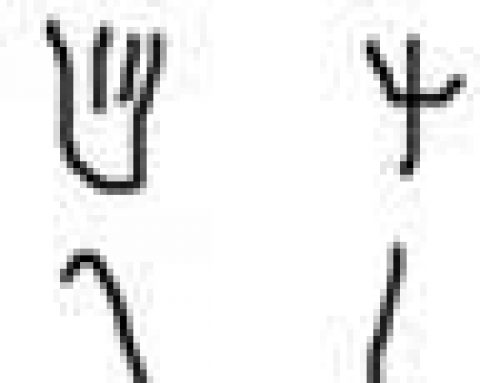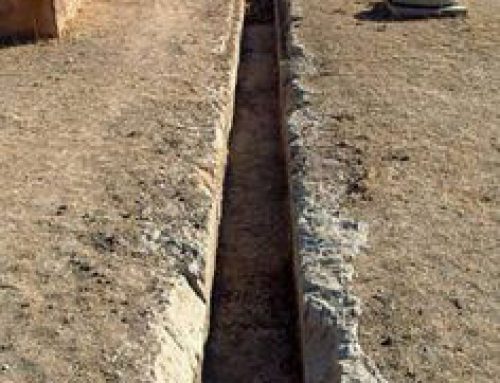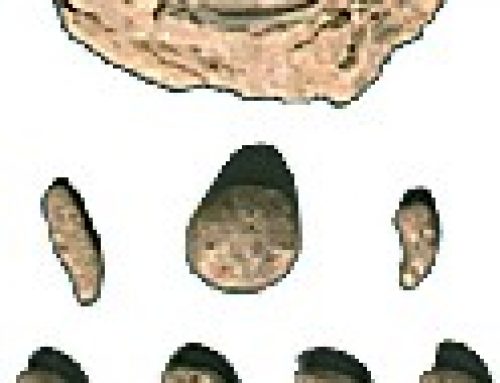
Barley ready to be harvested
How is barley different from wheat?
Barley’s a kind of grass, like wheat or millet or sorghum or rice, that is a good source of carbohydrates for people. Barley and wheat both grew wild in West Asia. Barley is different from wheat mainly in that it will grow with less rain, so you can grow it more different places. Also, barley doesn’t taste as good as wheat. So poor people usually ate more barley, and rich people ate more wheat.
More about wheat
How about millet?
West Asian food history
All our West Asia articles
When did people start farming barley?
In the grasslands where people liked to live, barley grew wild. People gathered it when it came ripe every spring. They ate barley boiled, like oatmeal, or in soup, or they ground it into flour and made bread. People first began to farm barley (instead of picking it wild) around 11,000 BC in West Asia, possibly because of a climate change that made the world hotter and drier.
History of farming
Stone Age West Asia
Climate change in world history

Barley stew
How did people eat barley?
Early farmers ate barley like wheat as a boiled porridge, or in soup, and they also made barley bread. But barley is also the grain that people usually used to make beer. People didn’t make noodles out of barley.
History of beer
How to make barley soup
What did they use the straw for?
Because you only ate the seeds from the barley, you had all the rest of the plant left over. The stalks dried into straw. You could weave the straw into mats to sleep on, or give it to animals to sleep on, or make shoes or baskets out of it, or tie it into bunches to thatch your house. The leftover straw was nearly as useful as the seeds.
More about straw
Ancient Egyptian shoes
History of baskets
What is thatching?

Barley spreads around the world
Farming barley spread south from West Asia to Egypt and North Africa around 8500 BC and to Sudan by about 5000 BC.
Food in ancient Egypt
Early African Food
Barley also spread to Greece and Italy about 7000 BC, and reached northern Europe about 5000 BC, travelling along the Danube and Volga rivers. In Ireland and Scotland, though, oats and oatmeal were more common than barley. By about 6000 BC, barley reached India, and it got to China about 3000 BC. (People didn’t eat much barley in China, where they ate millet or rice instead, but they used barley to make beer.)
Northern European food
History of oats
Indian food
Food in China
By about 1000 BC, people were farming barley in Korea, and by 500 AD Tibetan people were also eating a lot of barley. Barley reached Ethiopia about 500 BC, and West Africa in the Middle Ages. The Dutch brought barley to South Africa in the late 1650s.
History of Korea
Medieval Tibet
African food and colonization
From barley to rye and potatoes
Under Roman and Parthian rule, ordinary people lived mainly on barley bread and barley porridge and soup, while rich people ate wheat. But by the Middle Ages, poor people in Northern Europe and Eastern Europe switched to rye bread (not very happily).
More about rye bread
And about potatoes
British settlers brought barley to the Americas in the 1600s AD in order to make beer, but they ate mostly wheat and oats. Spanish traders brought barley to South America, Mexico, and California, but it didn’t really catch on.
Their bigger contribution was to bring potatoes in the other direction, from South America to Europe. Gradually poor people in Europe switched from barley to potatoes as their main food. Today Europeans and Americans mainly use barley for beer, but in North Africa and Tibet, barley porridge and barley bread are still ordinary food.
Learn by doing – barley soup
What about wheat?
Bibliography and further reading about barley:
Ancient Agriculture: From Foraging to Farming, by Michael and Mary Woods (2000). For middle schoolers, with plenty of information about how farming got started, and how it worked.
Oats, Peas, Beans and Barley Cookbook, by Edyth Young Cottrell (1974).
Famine and Food Supply in the Graeco-Roman World : Responses to Risk and Crisis, by Peter Garnsey (1988). By a leading specialist in Greek and Roman food and farming, and not too hard to read. Especially good on crop failure.
Last Hunters-First Farmers: New Perspectives on the Prehistoric Transition to Agriculture, by T. Douglas Price (1995). Why people started farming.




